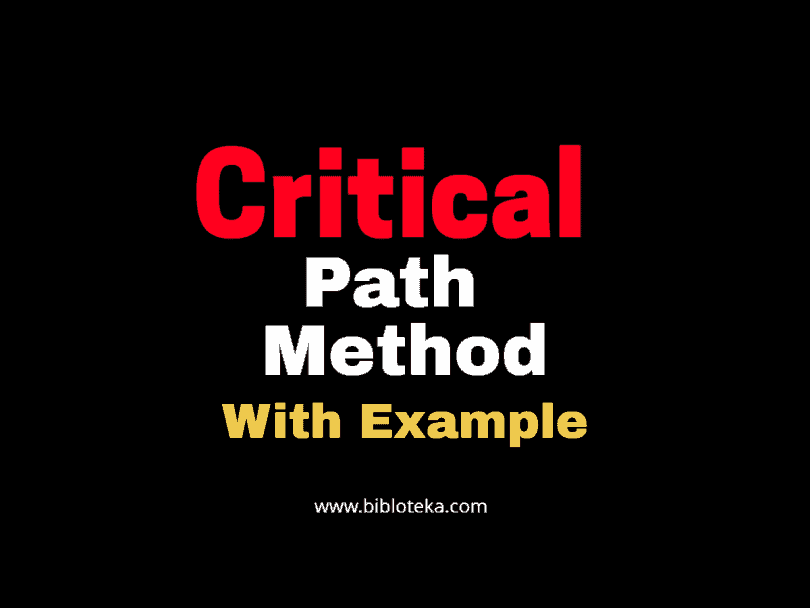Critical Path Method (CPM)
Critical Path Method is used in the preparation of the optimized project time schedule involving all the project activities.
To understand the concept of the critical path method (CPM), you need to understand the various terms used in this method.
Critical Path Definition in Construction Project Management:
- The critical path (CP) is the longest distance between the start and the finish of your project, including all the tasks, their duration, which gives you a clear picture of the project’s actual schedule.
- A critical path is a sequence of interdependent activities or tasks that must be finished before the project can be finished.
- It is the longest path from project start to project finish. At the same time, the longest path is the path that shows the minimal time in which a project can be finished. If there is a delay in any activity of the path, the whole project will be delayed accordingly.
How to calculate the critical path?
The critical path (CP) in project management refers to the sequence of activities that are critical to your project completing on time. It’s the longest series of activities within your project, which means that if you have a delay in any of those activities, it will push out your project end date. Activities that aren’t on the critical path (CP) may be able to suffer a delay without impacting your overall schedule.
Many scheduling and planning tools will automatically identify your critical path for you, as long as you built the following three key elements into your schedule:
- All project activities with start and end dates
- Task Durations
- Task relationships or dependencies
If you’re not using any project management software (Primavera P6, MS Project,etc..) or you just want to double-check things for yourself, here is how to calculate critical path in project management:
- Identify all of your activities or activities, their durations, and their relationships.
- Build a schedule network diagram(Critical Path Diagram), which is a visual sequence of how your tasks interrelate.
- Now you need to start identifying all possible paths through the diagram.
- Next, calculate the length or duration to complete each path by adding up the duration of all activities along that path.
- Identify which path has the longest total duration. That is your critical path.
What is Float?
The Float also called Slack, is the amount of time that an activity can be delayed without delaying a project or causing delays in other activities. There are 3 types of float. let’s review them one-by-one.
Total Float: Total Float is the amount of time an activity can be delayed without delaying the project end date.
Free float: Free float is the amount of time an activity can be delayed without delaying the early start date of the successor activity.
Project Float: This is the amount of time an activity can be delayed without delaying externally imposed project end date.
Note: Critical path activities should have zero floats. This’s because the critical path (CP) activities show the longest path of the project to finish, and therefore any activity on the critical path will have zero floats. When there’s a delay on a critical path (CP) activity, it will cause project delays respectively.
Total Float Definition
Total Float is very important in Critical Path Method Calculation, Total Float is the amount of time in which an activity can be delayed without delaying the project end date.
Total float calculated by subtracting the Early Start date of activity from its Late Start date
(Late Start date “LS”– Early Start date “ES”) or Early Finish “EF” date from its Late Finish date “LF” (Late Finish date – Early Finish date).
Free Float Definition
- Free float is the amount of time in which an activity can be delayed without delaying the early start date of the successor activity.
- Free float calculated by subtracting the Early Finish date of the activity from the Early Start date of the next activity (ES of next Activity – EF of current Activity).
Float Determination
When you start identifying the critical path for the project, you can determine the float for each activity. The float is the amount of time an activity can delay before it causes your project to be delayed. A float is sometimes referred to as slack.
Figuring out the float/slack using the Critical Path Method (CPM) is easy. You will begin with the activities on the critical path. Each of those activities has zero float. If any of those activities delayed, the project will be delayed.
Critical Path Method Tips
Critical Path Method is a very important topic. It is widely used in the project management world and in real-world projects as well.
- There can be more than one critical path in a project. If there are more than 1 critical path (CP) that has the same duration, then, you need to focus on all of these critical paths to monitor the project duration.
- Having many critical paths (CP) or having several near-critical paths mean that the project has a high risk. Because, instead of one critical path (CP), your project time schedule depends on several critical paths. Respectively, your project time programme performance will be depending on activities on those several critical paths. Several project critical activities will bring higher risks respectively.
- The critical path (CP) of the construction project can change over time.
See Also
Project S curve Explanation
Procurement Management in Construction









